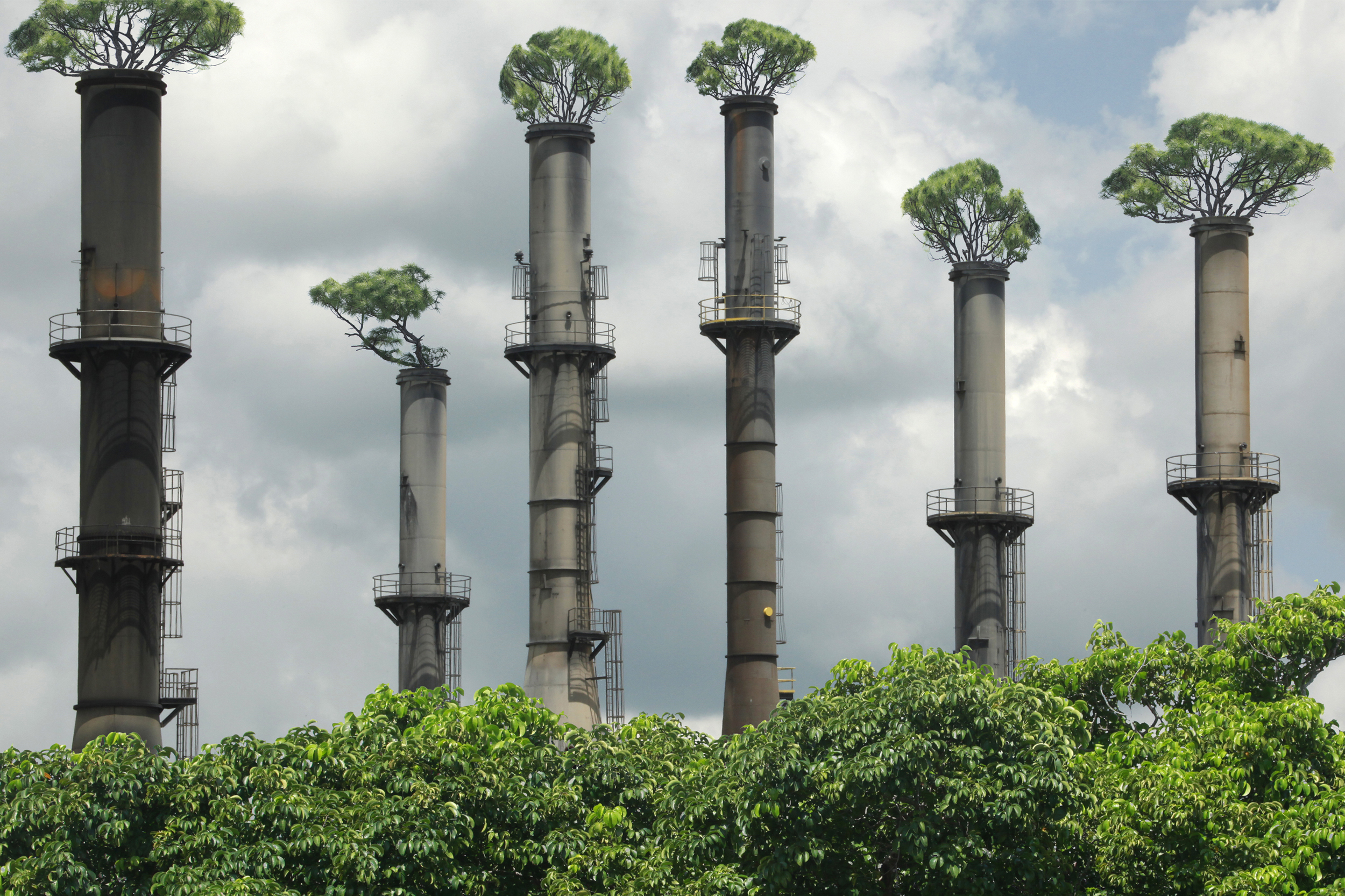At Grupo Santander, we’ve reached our goal of becoming carbon neutral in our own operations by releasing less CO2 and offsetting our emissions with a five-project carbon-offset scheme.
What is carbon neutrality?
Carbon neutrality is when an institution, company or even an individual implements measures to stop releasing CO2 into the atmosphere, reducing their footprint. When some emissions can’t be cut, offsetting is a complementary measure to achieve neutrality.
How do we offset emissions we can’t eliminate? There are two options: wiping out emissions already in the atmosphere or preventing pollutant emissions.
To know if a company is carbon neutral, we need a calculator to work out two things: the gross emissions a company produces in a certain period and the carbon credits it acquires from offsetting initiatives that can absorb existing emissions (e.g., reforestation) or curb them (e.g., renewable energy). We subtract the emissions the company offsets from the ones it produces. If the result is zero, the company is carbon neutral. At Santander, we are delighted to have achieved this.
How did we do it?
Since 2011, we’ve measured, reported on and reduced our group-wide carbon footprint based on emissions from the energy and raw materials we consume, the paper and card waste we produce and the commutes our employees take in our key markets. After significantly reducing our footprint, in 2019 we set our sights on sourcing 100% of the electricity we consume across the globe from renewables by 2025. At 2020 year-end, we reached 57%.
Santander’s commitment to protecting the environment does not end there. We also want to eliminate unnecessary single-use plastics at offices and buildings by 2021.
How did we offset our emissions?
Aside from the measures we’ve had in place since 2011, we have a carbon-offset scheme comprising five projects in Mexico, Spain, Brazil, Germany and the US. It involves purchasing carbon credits from projects that either stop emissions or capture gases already released. The projects, which have been certified under the highest international standards, focus on wind power, hydroelectricity, reforestation and nitrous oxide (N2O) reduction in a collective, cross-border effort that is part of our pledge to tackle climate change.
Want to find out more? Our commitment is gaining ground
We’re proud to be carbon neutral in our own operations and want to achieve much more.
Santander not only publicly commits to reducing and offsetting its own emissions but also works to assist customers in their transition to a low-carbon economy and more sustainable business models with solutions and products designed for different geographies, industries and market segments.
Over the last 10 years, Santander has been the only bank consistently among the top 10 financiers of renewables, in terms of volume and number of deals, and has been the leader in the last five, according to Dealogic. To combat climate change, it has also committed to raising and mobilizing EUR 120 billion in green finance between 2019 and 2025, and EUR 220 billion by 2030, reaching EUR 33.8 billion at 2020 year-end.
Santander Corporate & Investment Banking closed 2020 as the world leader in renewable financing and has a new global environment, sustainability and governance (ESG) team. Santander Wealth Management & Insurance now has almost USD 7 billion in assets under management that invest according to sustainable criteria around the world. Furthermore, we’re offering and creating green solutions that include green mortgages; energy efficiency loans; loans to install solar panels, purchase electric vehicles and for low-carbon agriculture; ESG investment; and additional services such as environmentally-friendly cards and a carbon footprint measurement tool that enables customers to offset their emissions.
Our responsibility as a key player in the transition to a low-carbon economy forms part of everything we do. That’s why we champion a green and inclusive economy, as well as supporting sectors that represent the driving force behind environmental transition.
We’re a proud founding member of the United Nations Principles for Responsible Banking and signatory to the UN’s Climate Action Collective to accelerate the transition of the financial sector to a low-carbon economy. We were also the first bank to join the Green Recovery Partnership promoted by the European Parliament to drive the actions and investments needed to achieve climate neutrality and healthy ecosystems.
More details of the carbon offset projects:
Through Climate Trade: wind farm with an installed capacity of 309 megawatts (MW) in operation since 2011 and developed by Acciona. The energy supplies Mexico’s electricity grid, which reduces greenhouse gas emissions in a country where power generation relies heavily on fossil fuels.
Through CO2 Revolution: the project is restoring the vegetation damaged by the wildfire in 2012 in a protected area of high environmental value. It involves groundbreaking, large-scale reforestation that uses big data to select optimal locations, smart seeds with a higher survival rate and drones to reduce costs and increase volume.
Through the company Chooose: the project aims to reduce emissions with renewable energy sources thanks to the construction of a hydroelectric plant with a capacity of 182 MW, developed by the Salto Pilão Business Consortium - CESAP. The project contributes to sustainable growth, reducing demand on the national electricity system and avoiding some of the negative impact of building large hydroelectric plants.
Through Ecoterrae: this project’s objective is the catalytic reduction of nitric acid inside the ammonium burner of the N2O plant owned by multinational COMPO in Krefeld. Nitric acid is widely used to produce fertilizers. This measure can prevent the release of 118,000 tonnes of CO2 into the atmosphere where N2O reduction is neither profitable nor legally required.
Through Numerco: the project is building and running a landfill gas collection and destruction site. Collected gas goes to a thermal power station that replaces fossil fuel power generators. Spartanburg County, Milliken Company and Lockhart Power are running various stages of the project.















